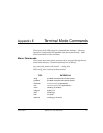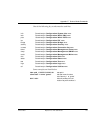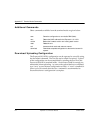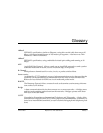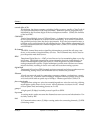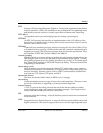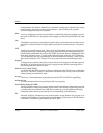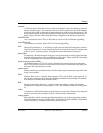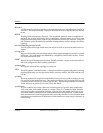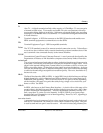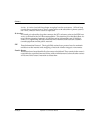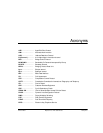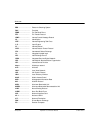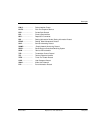
Glossary
61200176L3-1 Express 4110/4120 User Manual Glossary-5
netmask
A 32-bit bit mask which shows how an Internet address is to be divided into network,
subnet, and host parts. The netmask has ones in the bit positions in the 32-bit address
which are to be used for the network and subnet parts, and zeros for the host part. The
mask should contain at least the standard network portion (as determined by the ad-
dress's class), and the subnet field should be contiguous with the network portion.
non-ISDN line
Any connection from a CPE to a SPCS that is not served by D-Channel signalling.
non-ISDN trunk
Any trunk not served by either SS7 or D-Channel signalling.
NT1
Network Termination 1. A unit that provides physical and electromagnetic termina-
tion of the U-interface 2-wire transmission line, converts between Layer 1 formats used
at the U- and T- reference points, and performs some maintenance functions.
phase jitter
In telephony, the measurement in degrees out-of-phase that an analog signal deviates
from the reference phase of the main data-carrying signal. Often caused by alternating
current components in a telecommunications network.
point-to-point protocol (PPP)
An implementation of TCP/IP which is intended for transmission using telephone
lines. PPP provides router-to-router and host-to-network connections over both syn-
chronous and asynchronous circuits.
poison routes
Routes which have an infinite metric which to other routers means the network for the
route is inaccessible.
PRA
Primary Rate Access. Connects high-capacity CPE, such as PBXs, to the network. In
the US, this is composed of twenty-three 64 kbps channels and one 64 kbps D-channel.
Also known as Primary Rate Interface (PRI).
RIP
Routing Information Protocol. A protocol used to exchange routing information
among a set of computers connected by a LAN. RIP uses hop counts as a routing met-
ric.
router
An interface which finds the best route between two networks. Routers forward pack-
ets from one network to another, based on network layer information.
routing metric
The method by which a routing algorithm determines one route is better than another.
This information is stored in routing tables. Such tables include reliability, delay band-
width, load, MTUs, communication costs, and hop count.



